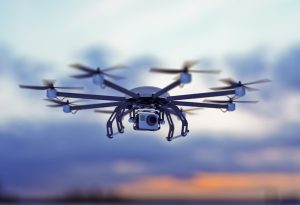 The Federal Aviation Administration has released new rules to the public governing the use of drones in the sky. The FAA’s 624-page rulebook marks the first attempt by the agency to regulate the use of the craft and ensure the safety of the aircraft they will share the sky with. The final rule still has a 60-day comment period and several details remain to be worked out, but many believe that this is a good first step.
The Federal Aviation Administration has released new rules to the public governing the use of drones in the sky. The FAA’s 624-page rulebook marks the first attempt by the agency to regulate the use of the craft and ensure the safety of the aircraft they will share the sky with. The final rule still has a 60-day comment period and several details remain to be worked out, but many believe that this is a good first step.
The new rules allow commercial drones weighing up to 55 pounds to fly during daylight hours. The aircraft must remain within sight of the operator or an observer who is in communication with the operator. Flight paths must be lower than 400 feet in the air, with exceptions if the craft is within 400 feet of a taller building or tower. Drones can operate in the evening only if the aircraft carries lights visible for three miles.
Operators must be at least 16 years old and pass an aeronautics test every 24 months for a certificate. Operators must also pass a background check by the Transportation Security Administration. The same security considerations that ban nongovernment airplanes from flying over the District of Columbia would apply to use of drones. Drone hobbyists have similar flight guidelines, but Congress exempted them from the formal rules.
Already, the number of registered drones exceeds the number of airplanes. As of June 8, FAA had 464,591 drone operators registered who can fly one or more drones. Another 10,054 people registered one drone apiece. An estimated 700,000 to 1 million drones were sold during the 2015 holiday season. The FAA estimates that drone sales will grow from 2.5 million this year to 7 million in 2020.
The FAA continues to research issues on how to minimize collisions and crashes. Those who operate commercial and private passenger aircraft worry that a collision with a drone could bring down an aircraft. According to the FAA, there were 1,346 reported drone sightings from pilots and others between November 2014 and January 2016 concerning drones near airports at thousands of feet in the air. Pending legislation approved by the U.S. Senate would place all authority for drone rules in federal hands.
